On View
Want a Bruce Nauman All to Yourself? Now You Can Rent One of His Sculptures for Free at MoMA
The installation from 1972 can be all yours for an hour.
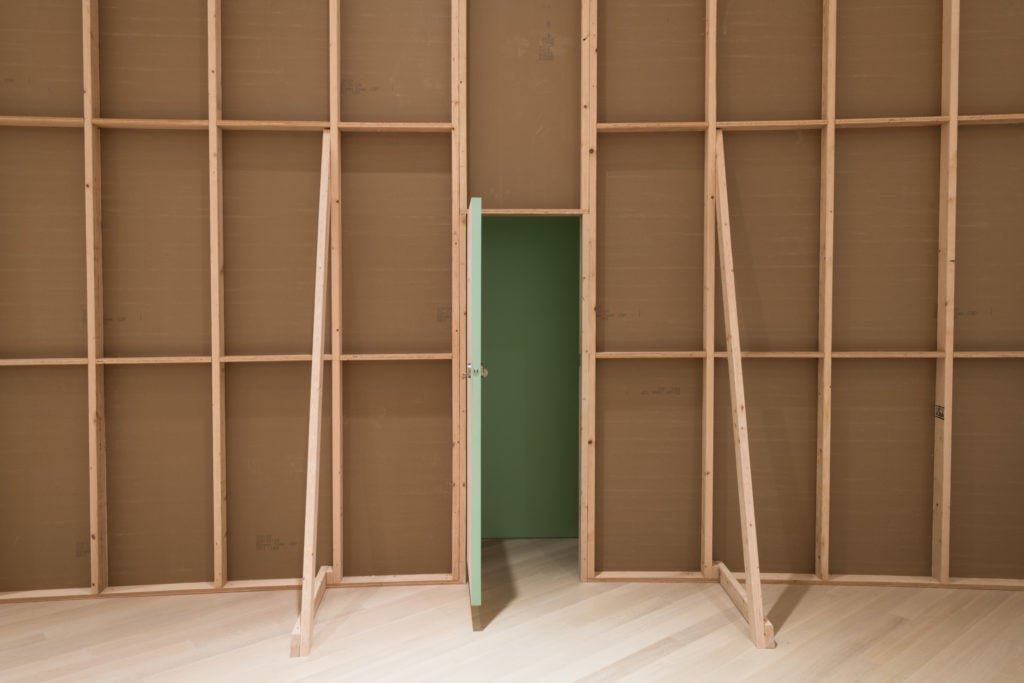
The installation from 1972 can be all yours for an hour.

New York’s most exclusive art experience is hiding in plain sight at the Museum of Modern Art.
In the middle of the museum’s Bruce Nauman retrospective, a work called called Kassel Corridor—a narrow, curved band of a room taking up a large swath of the sixth floor—is only open to one person at a time.
To get access, visitors must head to the fifth-floor information desk, where an attendant will check for empty time slots (it’s first come, first served) and provide a copy of the rules: you can have the key to the room for an hour and are advised to lock the door behind you. Oh, and you can’t share the key with anyone else.
The piece debuted at documenta 5 in 1972, where Nauman warned curator Harald Szeemann that if too many people were spotted breaking the rules, it would be up to exhibition staff to play enforcer and crack down. (None of Nauman’s other corridor pieces have such instructions.)
“It does feel like the strictness of the rules and the effort required on the part of the viewer is a part of the piece,” MoMA curatorial assistant Taylor Walsh told artnet News. “It’s important to Nauman to give the viewer who decides to participate the freedom to come and go as much as they might like in one hour, without a queue of people outside waiting to go in.”
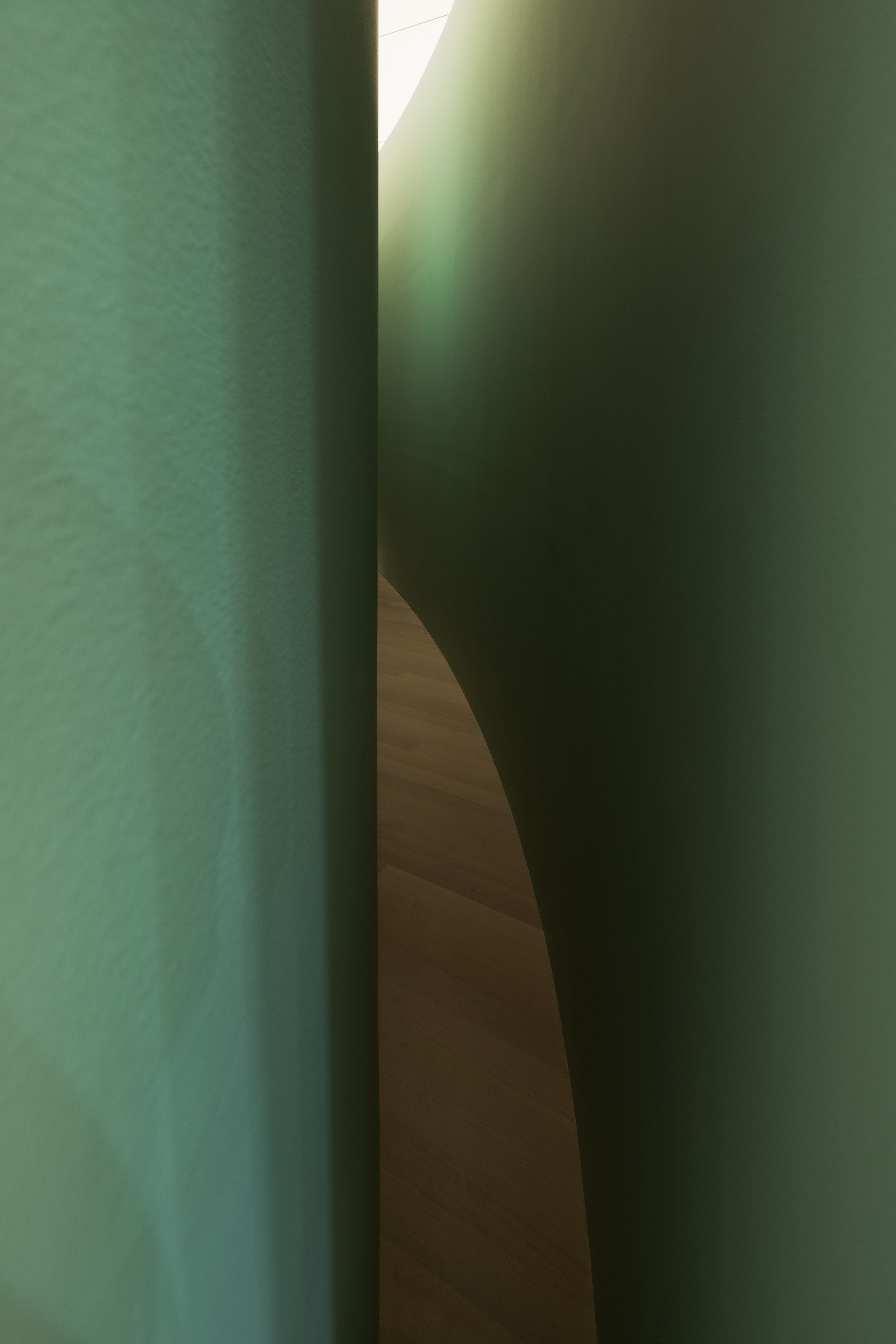
Bruce Nauman, Kassel Corridor: Elliptical Space (1972) at the Museum of Modern Art, New York. Photo by Martin Seck, © 2018 the Museum of Modern Art, New York; courtesy of the Solomon R. Guggenheim Museum, New York, Panza Collection; © 2018 Bruce Nauman/Artists Rights Society (ARS), New York.
According to the museum, demand for the key has been steady, but not overwhelming. By around 3 p.m. each day, the slots are all filled up and there’s a waiting list. On average, guests explore the private space for about ten minutes before returning the key.
“The individuality of the experience is really important,” Walsh said. “The key can’t be shared with groups of friends or family who come together. It’s your hour to do with what you want. But it’s only for you.”
We spoke with MoMA assistant curator Magnus Schaefer about the piece and its place in the exhibition.
What is it like to visit Kassel Corridor?
When you’re inside, it really is about experiencing this peculiar space and the ambient light. There’s also the contrast between the feeling of being alone inside of this space, and the fact that one becomes even more exposed once inside, because other than in the small area just inside the door where you can’t be seen, visitors can look in from the outside and watch you.
And as people look in through the outside, other visitors can see them looking in. There’s this really complex interplay between watching and being watched, between withdrawal, privacy, and exposure.
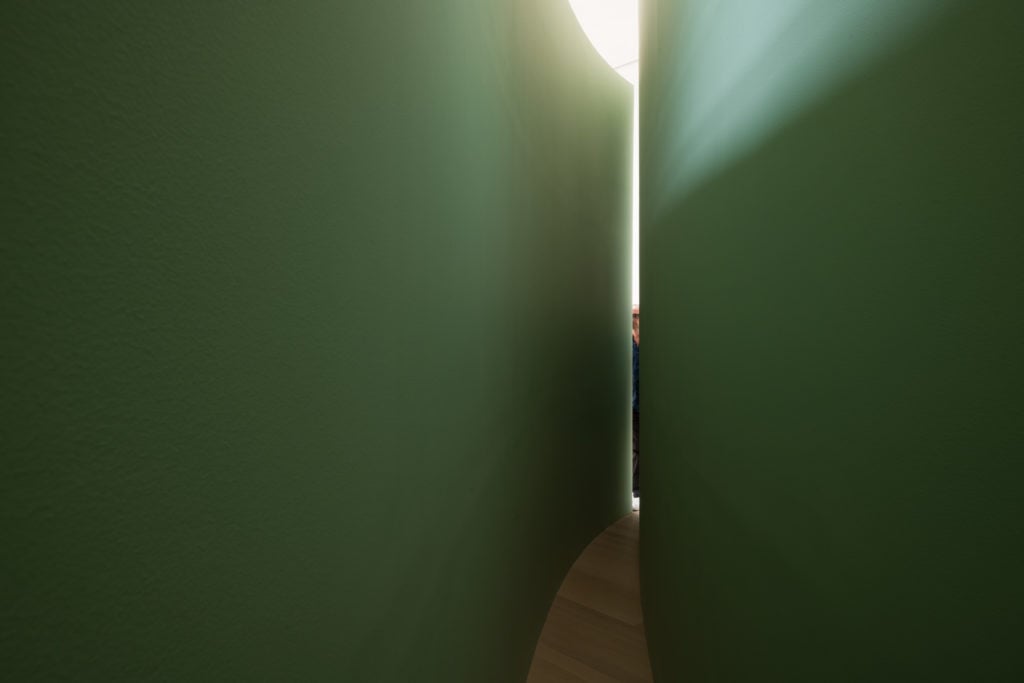
Bruce Nauman, Kassel Corridor: Elliptical Space (1972) at the Museum of Modern Art, New York. Photo by Martin Seck, © 2018 the Museum of Modern Art, New York; courtesy of the Solomon R. Guggenheim Museum, New York, Panza Collection; © 2018 Bruce Nauman/Artists Rights Society (ARS), New York.
What can you tell us about the significance of this work and how it fits into Nauman’s oeuvre?
Nauman began building these narrow corridor-like spaces in the late 1960s. Many of these works deal with tensions between accessible and inaccessible spaces. They produce these ruptures in how we experience space and how we expect to experience space. They do it this in a playful way that also has a darker aspect, insofar as we internalize ideas of control while we explore these works.
These works create a situation that is very much about seeing and being seen. Many of them involve live video feed, but Kassel Corridor does that through architecture, not video.
In the 1970s, Nauman couldn’t have thought of the questions of privacy that we face today, but I think the work still resonates with how we experience the tensions between privacy and exposure in our daily lives.
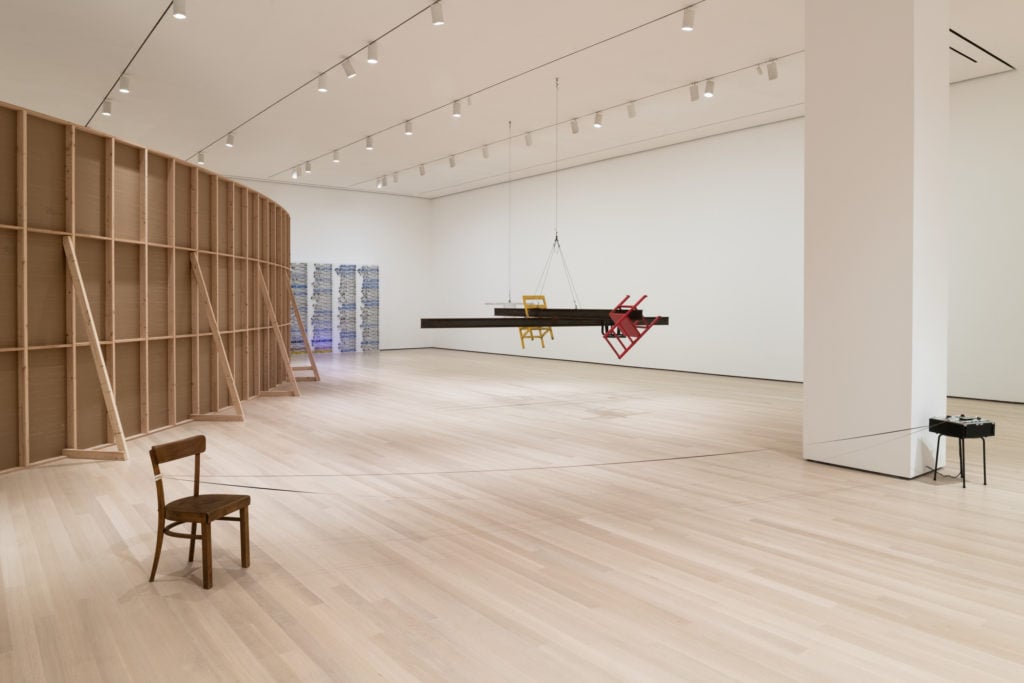
Bruce Nauman, Kassel Corridor: Elliptical Space (1972) at the Museum of Modern Art, New York. Photo by Martin Seck, © 2018 the Museum of Modern Art, New York; courtesy of the Solomon R. Guggenheim Museum, New York, Panza Collection; © 2018 Bruce Nauman/Artists Rights Society (ARS), New York.
How was the piece received at its first appearance at documenta?
There was not much media response to it! Carter Ratcliff discussed it extensively in ArtForum. He focused on the phenomenological experience of being in the space and the richness of this experience.
Ratcliff said being inside the corridor created an order of experience that was entirely different than being inside the galleries. It was a big contrast from the very crowded installation outside, a really large show that was packed with work. It’s interesting because he doesn’t mention at all that visitors could look in from outside.
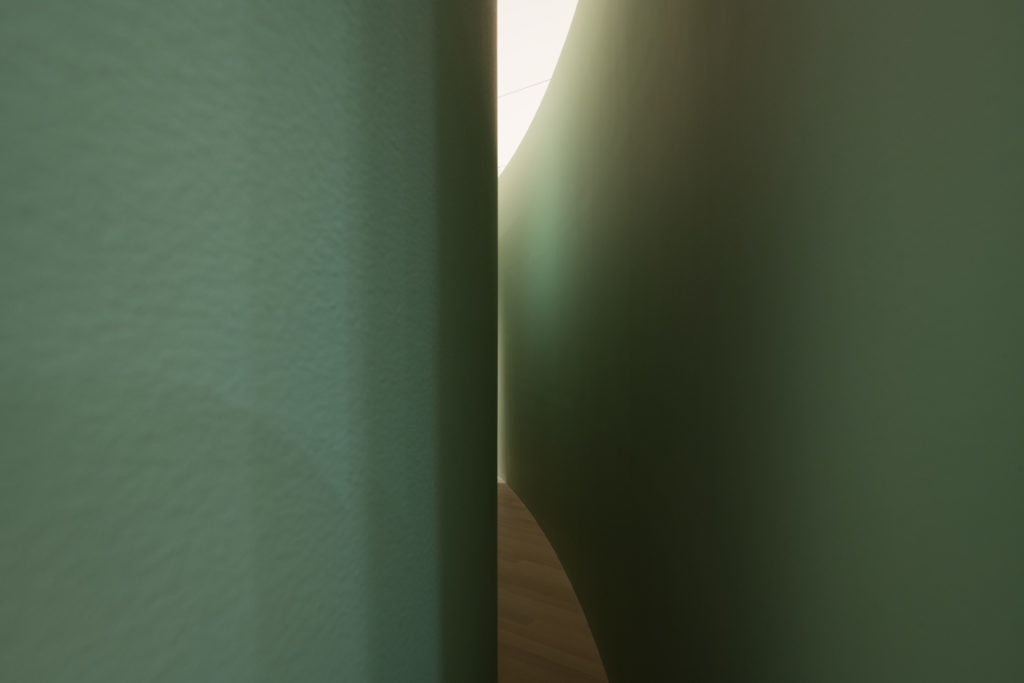
Bruce Nauman, Kassel Corridor: Elliptical Space (1972) at the Museum of Modern Art, New York. Photo by Martin Seck, © 2018 the Museum of Modern Art, New York; courtesy of the Solomon R. Guggenheim Museum, New York, Panza Collection; © 2018 Bruce Nauman/Artists Rights Society (ARS), New York.
Why was it important to include this piece in the show?
It’s really rare to see the work. This is the first time Kassel Corridor has ever been to New York, and only its fourth exhibition ever, after the Hamburger Bahnhof in Berlin in 2010 and LA MoCA in 1986.
In this installation at MoMA, we kept the space on the whole sixth floor really open, which has hardly ever been done before. We tried to let these larger architecturally scaled installations by Nauman define the space.
Going inside the corridor is like a literal disappearing act, and the whole concept of the show is about the idea of disappearing and what it means to be absent or to absent oneself. The corridor really fits right in there.
Why should visitors to the museum go out of their way to get the key to Kassel Corridor?
I think the space it creates is pretty unique. It is not an experience that you have every day, even though it resonates with element of everyday life. Not knowing what it is, it elicits a certain curiosity. It’s pretty mysterious. And then you go in and there’s not much actually in there! You’re left to reflect on yourself and the space.
“Bruce Nauman: Disappearing Acts” is on view at the Museum of Modern Art, 11 West 53rd Street, New York, October 21, 2018–February 18, 2019, and at MoMA PS1, 22-25 Jackson Avenue, Queens, October 21, 2018–February 25, 3019. Kassel Corridor is at the MoMA location.